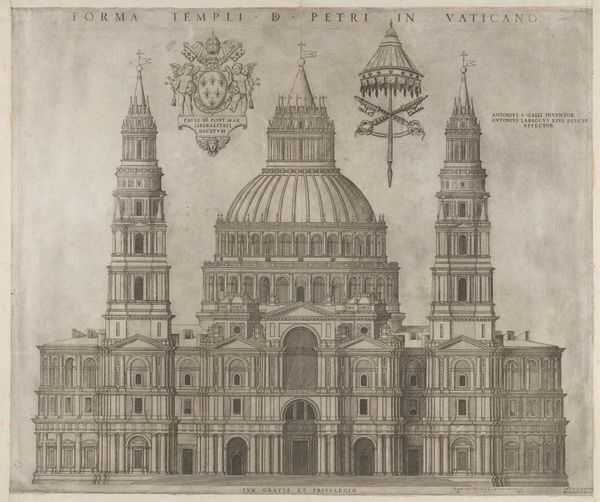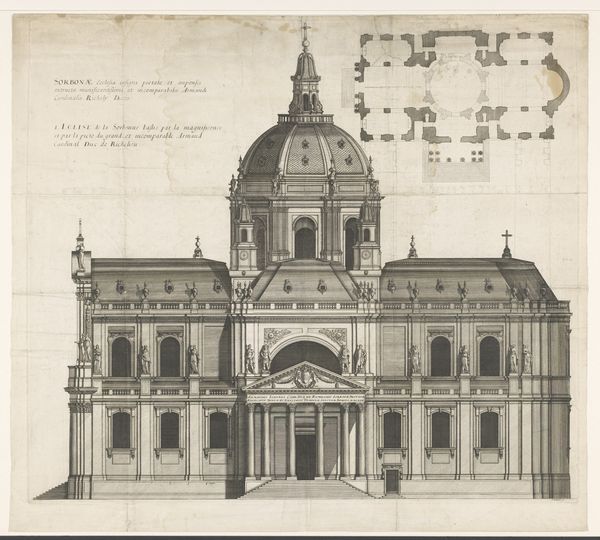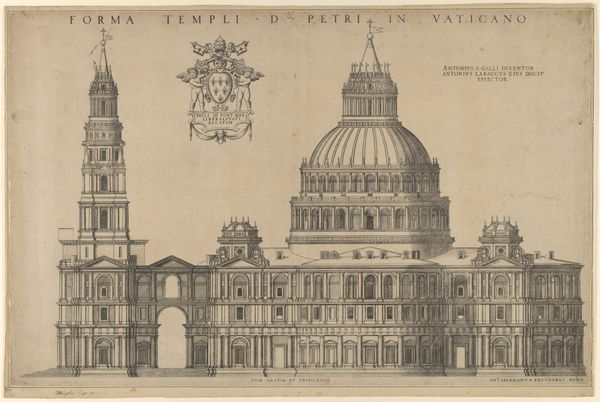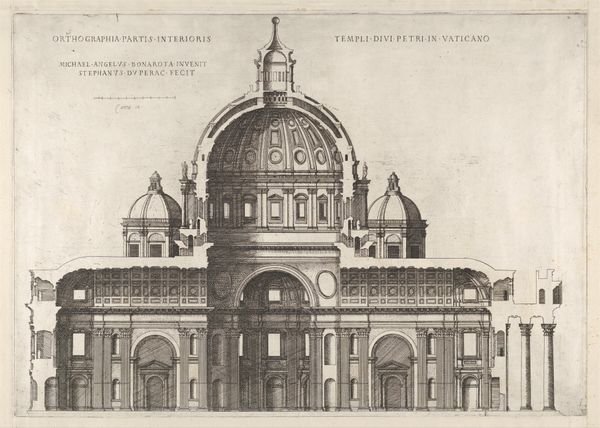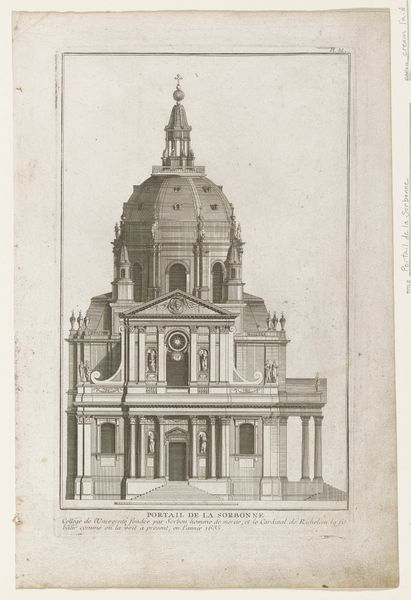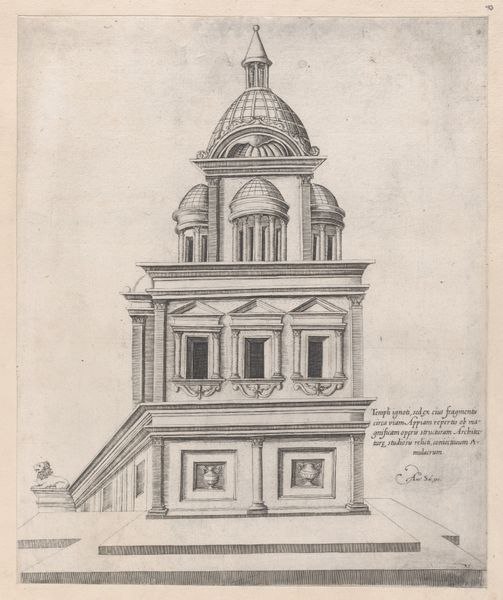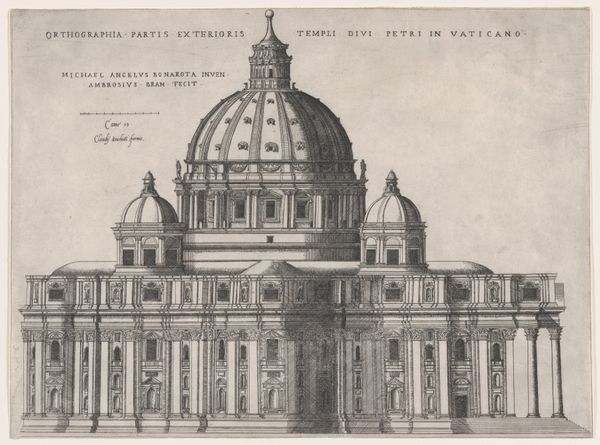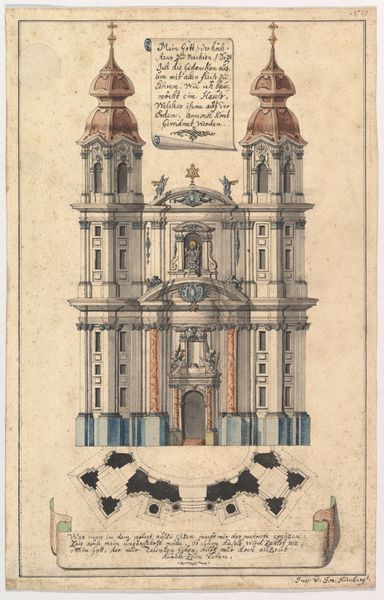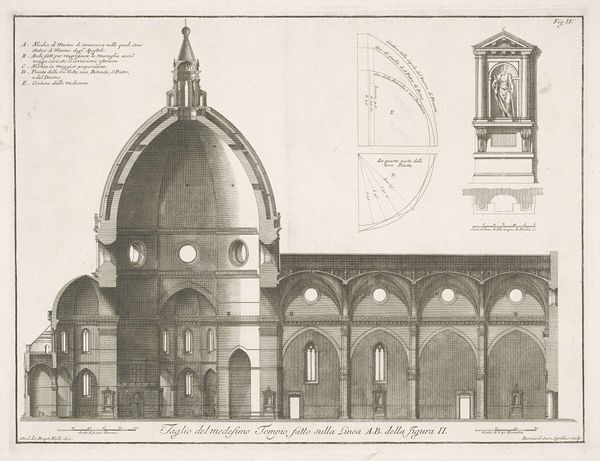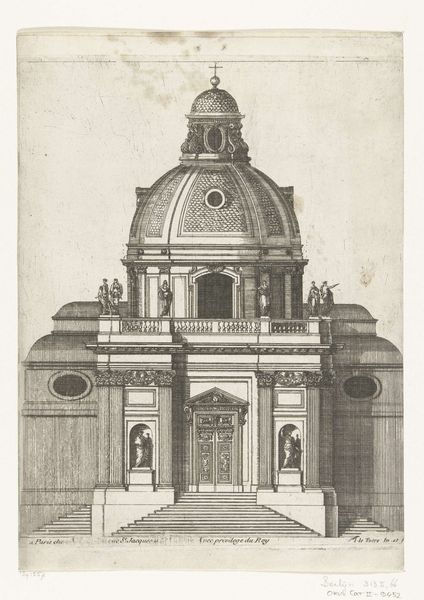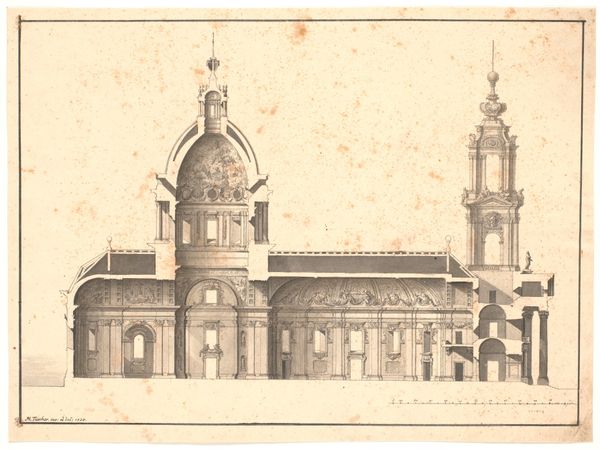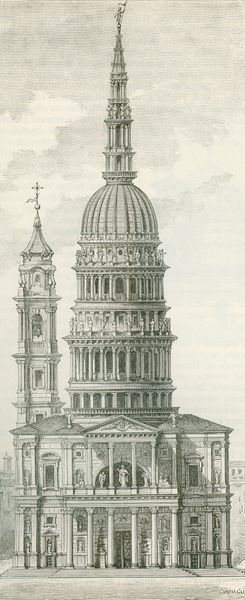
Unexecuted Design for the Façade of the Church of Santa Maria in Araceli in the city of Vicenza 1608
0:00
0:00
drawing, print, architecture
#
drawing
#
aged paper
#
toned paper
# print
#
pencil sketch
#
tea stained
#
coloured pencil
#
coffee painting
#
arch
#
watercolour illustration
#
golden font
#
watercolor
#
architecture
#
historical font
Copyright: Public Domain
Curator: Here we have Giacomo Monticolo of Vicenza’s “Unexecuted Design for the Façade of the Church of Santa Maria in Araceli in the city of Vicenza," created around 1608. The design comes to us in ink, with some watercolor, over graphite on paper. Editor: Immediately, I am struck by how grand it is. Even though it's just a drawing, you can feel the weight and aspiration of the architecture. The repetitive columns also impart a sense of austerity. Curator: It is indeed a study in architectural aspiration, steeped in the artistic and religious contexts of the early 17th century. This church was meant to visually express the power and sanctity of the Catholic Church. Editor: And one wonders why this specific design was unexecuted? Was it purely a matter of cost, or did its aesthetic perhaps clash with the prevailing religious or political sentiments of Vicenza at the time? Curator: Those are excellent questions. Vicenza, while prosperous, experienced periodic economic constraints, and the city council, the main patron of such projects, often faced competing demands. Also, while the design exhibits classic Renaissance features, some council members might have favored a more overtly theatrical Baroque style, already gaining momentum. Editor: I also notice the prominent display of saintly figures within niches on the façade. Considering the era, this design places a very clear emphasis on specific religious figures, reinforcing a rigid hierarchy in religious devotion. Curator: Absolutely. Churches functioned as crucial public spaces, their architecture not only inspiring awe but also communicating clear messages about doctrine and social order. Monticolo's design, in its classical restraint, embodies this intention. Editor: So, while this grand design was never brought to life, it speaks volumes about the ambitions and social values embedded in the architecture of its time, and offers a peek at power dynamics operating beyond the artwork itself. Curator: Indeed. It reminds us that art, even in unrealized form, serves as a mirror reflecting the complexities of history.
Comments
No comments
Be the first to comment and join the conversation on the ultimate creative platform.
